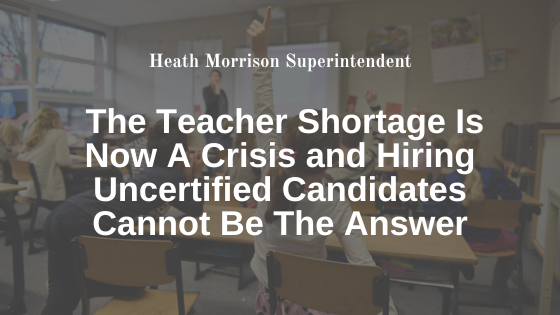Across the country, schools are welcoming students back to the classroom. Unlike previous years where a parent had every reason to expect their child would be welcomed by a fully certified teacher, schools have struggled to find such educators, and have tried to plug vacancies with uncertified candidates.
How bad is the teacher shortage? Last year the majority of schools in the US reported having at least one vacancy when opening back up. It has been reported that by 2025 there will be over 250,000 teacher vacancies. If early indicators are accurate, this school year will be even more challenging than last year with a huge number of vacancies being unfilled.
What is compounding this issue is that school districts are increasingly relying on uncertified candidates to fill this gap. Traditionally, prospective educators go through a university program or alternative certification program (ACP) to receive their teaching credentials and license. These opportunities also provide field-based experiences, rigorous content aligned to date standards, and supportive mentors to ensure that teachers are prepared and ready to educate their students.
When a school hires an “emergency cert” candidate or an uncertified individual these individuals simply possess a BA and can pass a criminal background check. They may have enrolled in an ACP but may have not started the program. They are greeting their students on the first day of instruction with no training in pedagogy or effective classroom practices and with no experience with children. Unfortunately, school districts, recognizing that this would be unacceptable in communities with more active and engaged parents in affluent communities, place them in schools impacted by high poverty, mobility, and language needs. In other words, the students who need the very best teachers are more likely to get these uncertified candidates.
We have to do better for our students. We need to consider ways to make the teaching profession more attractive so that interested individuals can go through a quality university or ACP program. Legislators need to work with universities and ACP providers to see what can be done to expand their capacities to support individuals who were hired with no certification but show promise and potential.

